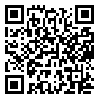Volume 9, Issue 4 (2018, Volume 9, Number 4 2019)
jdc 2019, 9(4): 288-301 |
Back to browse issues page
Download citation:
BibTeX | RIS | EndNote | Medlars | ProCite | Reference Manager | RefWorks
Send citation to:



BibTeX | RIS | EndNote | Medlars | ProCite | Reference Manager | RefWorks
Send citation to:
Mehrandish S, Mirzaee S. A review of topical delivery of antifungal drugs and comparison of conventional forms with novel drug delivery systems. jdc 2019; 9 (4) :288-301
URL: http://jdc.tums.ac.ir/article-1-5356-en.html
URL: http://jdc.tums.ac.ir/article-1-5356-en.html
1- Student Researches Committee, Faculty of Pharmacy, Kermanshah University of Medical Sciences, Kermanshah, Iran
2- Department of Pharmaceutical Education, Faculty of Pharmacy, Kermanshah University of Medical Sciences, Kermanshah, Iran ,shahlamirzaeei@gmail.com
2- Department of Pharmaceutical Education, Faculty of Pharmacy, Kermanshah University of Medical Sciences, Kermanshah, Iran ,
Abstract: (3958 Views)
Fungi are eukaryotic organisms that potentially have the ability to cause disease in humans and animals. Fungal infections are called mycosis, which are divided into four types of superficial, cutaneous, subcutaneous and systemic, depending on the area of the body involved. Though cutaneous mycoses are rarely life-threatening infections, they can isolate the patient socially due to the disfigurement of the tissues they caused, as a result of which, treatment has always been an important issue. On the other hand the similarity of fungi to mammalian cells led to difficulties in the development of novel antifungal drugs. Consequently, in recent years, extensive efforts have been made to design and develop novel drug delivery systems with better efficacy for drug delivery of conventional anti-fungal drugs. In this study, we compared conventional forms and novel drug delivery systems of a number of antifungal drugs. All studies confirm the relative priority of novel drug delivery systems to conventional forms in terms of penetration, release, and antifungal effects.
Keywords: antifungal drugs, topical drug delivery, novel drug delivery systems, conventional dosage forms
Type of Study: Review |
Subject:
Special
Received: 2019/03/12 | Accepted: 2019/03/12 | Published: 2019/03/12
Received: 2019/03/12 | Accepted: 2019/03/12 | Published: 2019/03/12
Send email to the article author
| Rights and permissions | |
 |
This work is licensed under a Creative Commons Attribution-NonCommercial 4.0 International License. |





